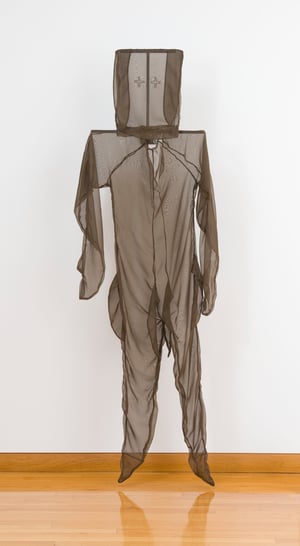DAY 16:
BLACK LIVES MATTER
“It’s also about Oscar.
Aiyana.
Trayvon.
Rekia.
Michael.
Eric.
Tamir.
John.
Ezell.
Sandra.
Freddie.
Alton.
Philando.
It’s even about that little boy in 1955 who nobody recognized at first—Emmett.”
Angie Thomas
Black. Lives. Matter.
These three words have sparked a movement and raised a lot of questions. These words were first written by Alicia Garza in July 2013 after the not guilty verdict of George Zimmerman in the killing of Trayvon Martin. Garza, Patrisse Cullors, and Opal Tometi were motivated to speak out. These words have sparked a new wave of social protest and consciousness regarding the conditions of Black lives around the country. Even Des Moines has not been immune to the protests.
There are many questions about Black Lives Matter (BLM). Let's separate fact from fiction and understand the deeper meaning behind the phrase and movement.
- “Black Lives Matter” can refer to a social media hashtag, a slogan, a loosely connected confederation of local organizations advocating for racial justice, or a social justice movement.
- The slogan “Black Lives Matter” does not say or imply that Black lives matter more than other lives.
- ”Black Lives Matter” is a rallying cry that asks America to recognize the inequities in our institutions and systems that have a disproportionate negative effect on Black lives, and asks that our society do something to address these disparities.
- Black Lives Matter has over 40 chapters around the world. While most chapters are fighting for the same mission, they mostly operate as independent organizations. These organizations are comprised of local activists and organizers with no formal hierarchy or executive leadership.
With only 40+ official BLM chapters, this means that most protests taking place across the country and the world are organic, non-official BLM affiliated protests, comprised of community members demanding change. Through policy change, this greater movement works to confront racism and racial disparities by addressing police brutality, mass incarceration, racial profiling, and the school-to-prison pipeline.
According to the Anti-Defamation League, disinformation about Black Lives Matter serves to exacerbate divisions amongst U.S. residents in a time of heightened racial tension and seems to be an attempt to mischaracterize the movement as being violent and extremist. Historically, socio-economic movements, including African American movements, have faced being discredited, demonized, or dismissed. It remains important for all of us to do our own research and support equality within our sphere of influence.
According to Civis Analytics, 62% of Americans express at least some support for Black Lives Matter. The movement has gained the support of people from all segments of our population. The NY Times reported that 15 to 26 million people in the U.S. participated in demonstrations during the month of June after the death of George Floyd, making it the largest social protest in this country’s history. ACLED (Armed Conflict Location & Event Data) reports that 93% of the protests in June associated with Black Lives Matter were peaceful, non-violent protests. It is false to say you must be either pro-public safety or anti-racial profiling/police brutality. The fact is that you can stand for safety in your community and you can take a stand against unlawful actions against Black lives. You can have respect for both law enforcement and Black life.
Many young people on social media and on the front lines are calling for a more just society free of racism, prejudice, and bigotry. United, we can stand with them against injustice to address and ultimately eradicate racism in our communities.
TODAY’S CHALLENGE: Do one or more of the following…
WATCH:
Watch the TED Talk An Interview with the Founders of Black Lives Matter| Alicia Garza, Patrisse Cullors, Opal Tometi. In this spirited conversation with Mia Birdsong, the movement's three founders share what they've learned about leadership and what provides them with hope and inspiration in the face of painful realities. (16:05)
READ:
Read about the founders of BLM who are among Time Magazine’s 100 Most Influential People of 2020.
LEARN:
Learn how organizations can put words into action and create long-lasting change in Dear Companies: Your BLM Posts Are Cute But We Want To See Policy Change by Janice Gassam Asare.
ACTION:
Volunteer or donate to the Des Moines BLM Foundation
and Supply Hive.
NEXT TOPIC: LGBTQ+
CONVERSATION PIECE: Art Addressing Equity

Artist: Nayland Blake
Title: Untitled
Date of piece: 1993
Description: Nylon and steel, Overall: 78 1/2 x 25 x 14 in. (199.4 x 63.5 x 35.6 cm.), Des Moines Art Center Permanent Collections; Purchased with funds from the Edmundson Art Foundation, Inc., 1993.11. Photo Credit: Rich Sanders. © Nayland Blake, Courtesy Matthew Marks Gallery
"This ambiguous, life-size fabric figure is reflective of the artist’s skin color and reminiscent of a toy rabbit or the hooded robes of the KKK. Functioning as the dark skin or outer shell of a person of color, it demonstrates that attitudes and behavior are often determined by one’s appearance.”
Jeff Fleming
Des Moines Art Center
Thank you to the members of BRAVO Greater Des Moines for curating the Equity Challenge Gallery, a collection of art in various media that speaks to the issues of equity in our society.
%20white.png?width=202&height=99&name=21%20day%20equity%20challenge%20(banner)%20white.png)

